Heat979 Archivesan inevitable byproduct of work. It's generated when you start a car's engine, go for a brisk walk or anything else that generates friction. Heat is also prevalent in electronics where it can be more difficult to manage and can be detrimental to their continued operation. When it comes to graphics cards there are many ways to manage heat, from passive cooling, to fans and even water. But when these solutions aren't working, your GPU has one more way to beat the heat: thermal throttling.
When your GPU takes on a heavy workload, such as gaming, it generates a load of heat. When your cooling solution can no longer dissipate heat fast enough to keep temperatures within a safe range, your graphics card starts to dump performance to shed heat. The core and memory frequencies begin to drop---along with your framerates---until temperatures drop to a safe operating range. All modern GPUs have this feature in place to protect the electronic components from damage. Unmanaged, thermal throttling can have a big impact on performance. And, while thermal throttling itself doesn't cause any damage, the underlying cause of throttling, heat, can cause damage and shorten the lifespan of your video card.
In order to maintain performance, you need to control heat, but not all graphics cards experience throttling to the same degree, or even at all. There are a variety of scenarios that determine the impact thermal throttling has on your system. Case selection, cooling solution, and airflow are the three main factors to take into consideration.
A small case with no open space traps heat and inhibits airflow, which makes it harder to keep your GPU cool. Choosing a larger, well laid out case can provide more fan mounts and options to optimize airflow. Being able to mount additional fans in your case is especially beneficial if your GPU manufacturer has used a custom cooling solution that dissipates heat into your case instead of directly removing it, like with reference designs.
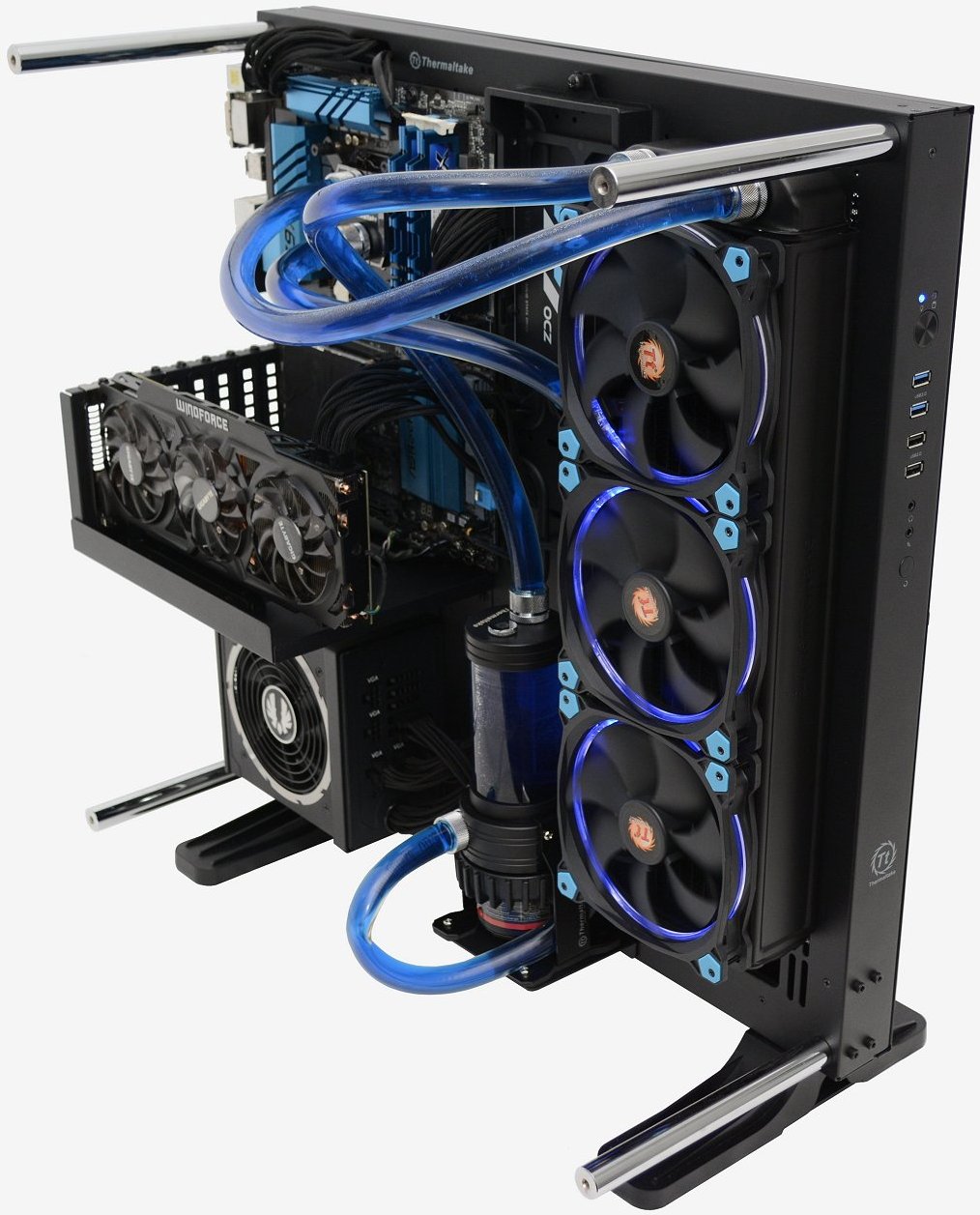
Adding additional fans to the top of your case ensures that heat generated by your GPU is removed from the case efficiently. It also lowers air temperature inside of your case keeping other components, such as your CPU and memory, much cooler.
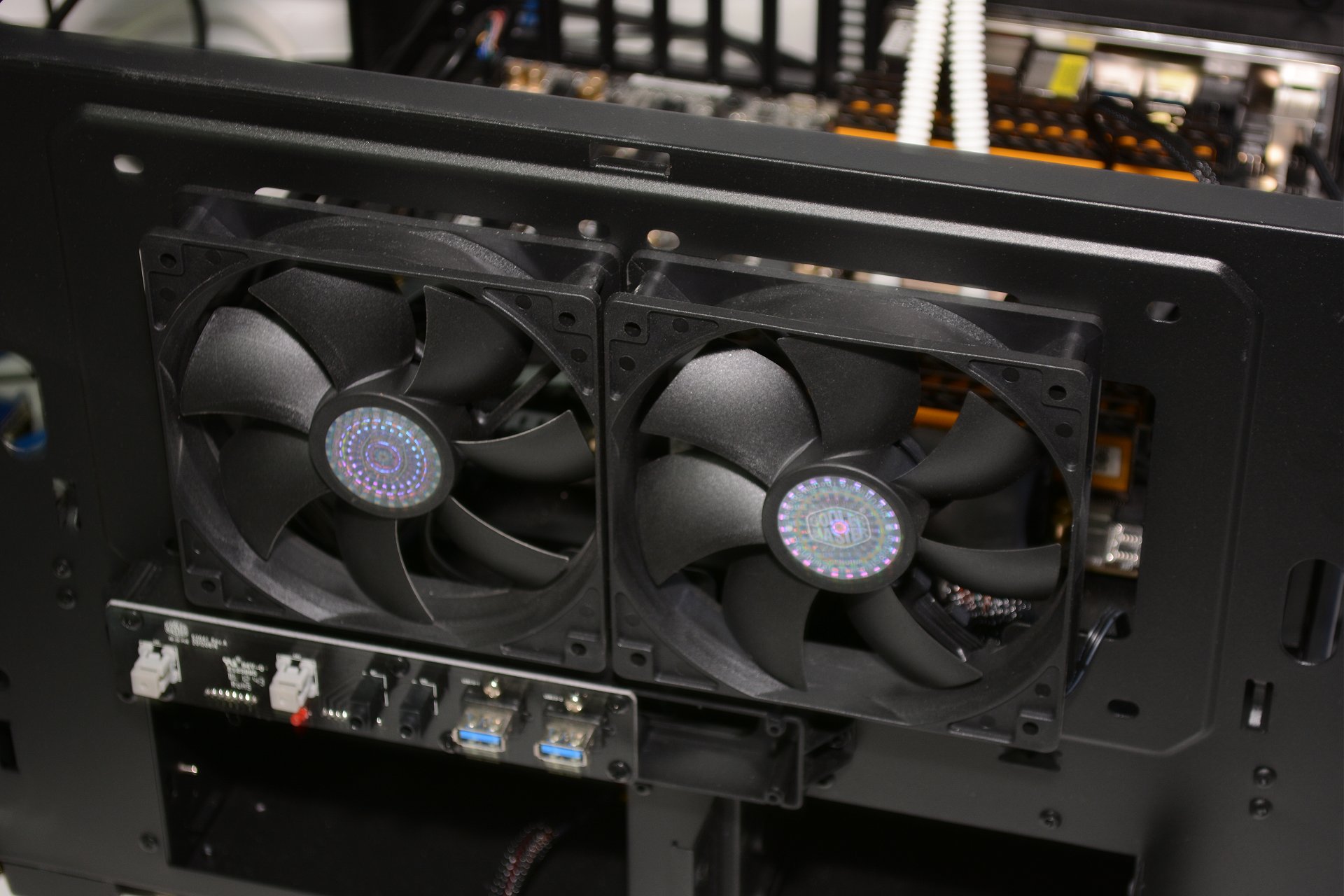
The brand of graphics card you choose may come down to personal preference, but the cooling solution it uses is an important decision. Reference designs---which are blower-type fans---typically use a single fan to keep the card cool. Cool air is drawn through the rear of the graphics card and exhausted out of the end with the connectors. This design is efficient but the single fan holds back performance.
When choosing a graphics card, it's often ideal to pick one with a multi-fan cooling solution. The additional fans---sometimes as many as three---provide enough airflow to significantly reduce or even eliminate throttling. It should be noted that your case needs to provide enough airflow to handle the hot air pumped out by these types of graphics cards as their coolers do not directly remove the heat from the case.
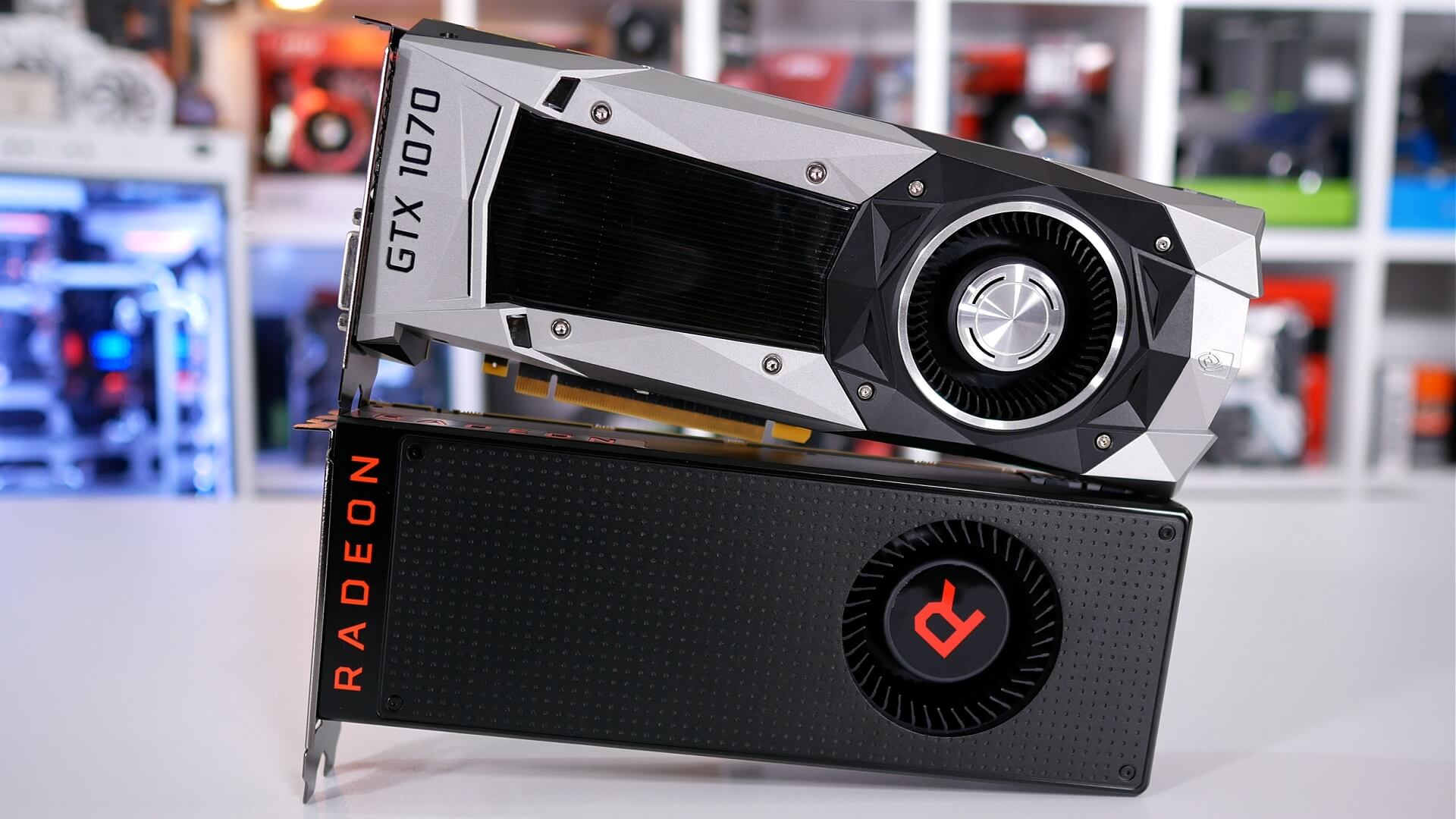
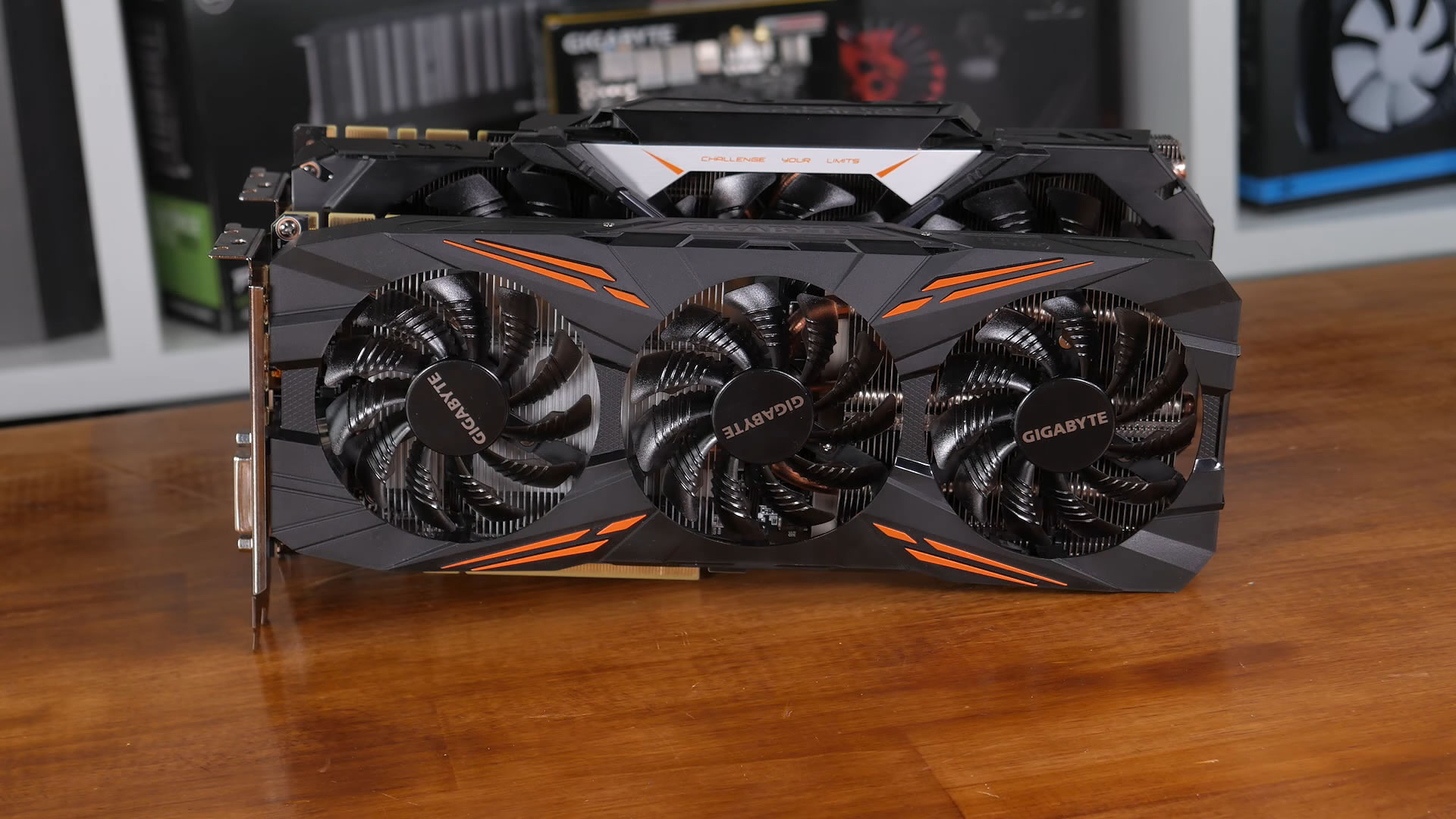
If changing or adding hardware is not an option, you can still reduce temperatures using freely available tools.
With utilities like MSI's Afterburner or EVGA's PrecisionX, a custom fan curve can be configured. By setting the fan curve manually, you can set the fan speed for a given temperature to something a bit more aggressive. From the factory, the fan speeds are optimized to strike a balance between noise and performance. With reference cards, this balance often leans more towards noise suppression and can lead to thermal throttling.
Noise levels will increase, perhaps significantly, but your GPU will be able dissipate heat much faster and maintain performance.
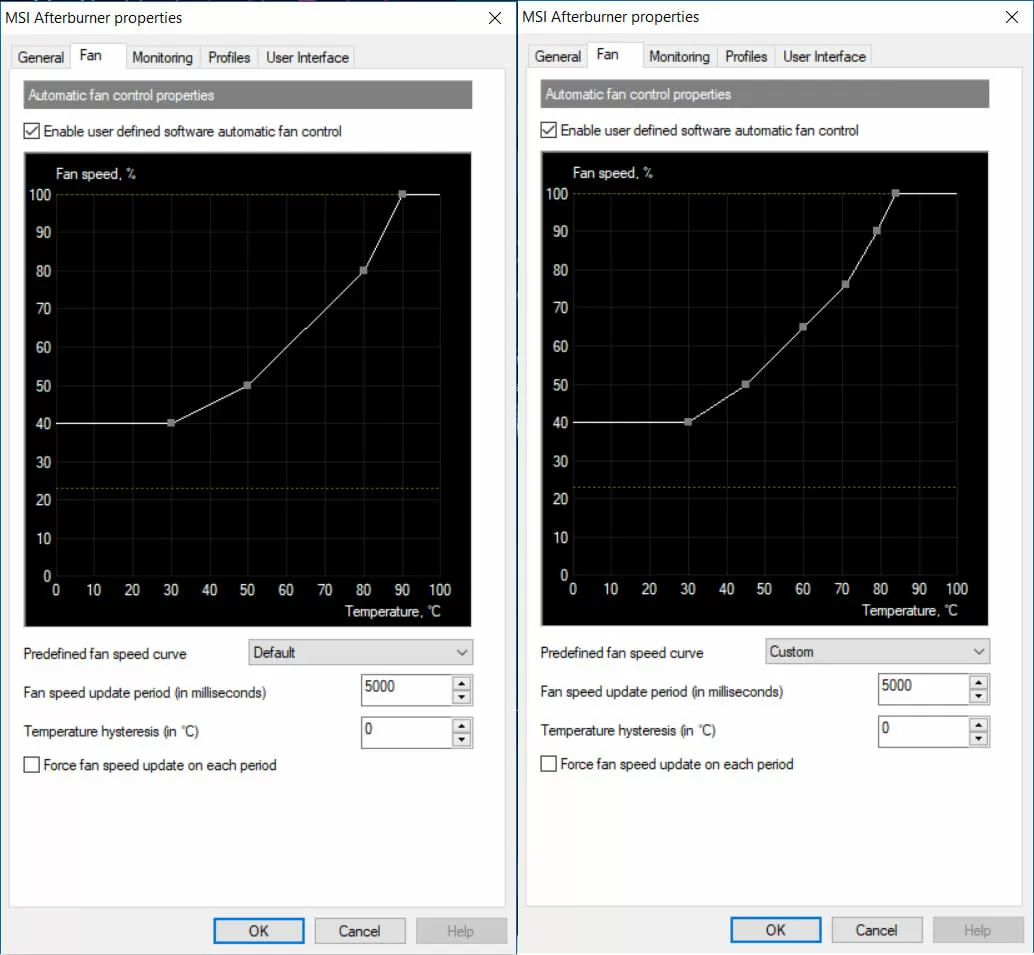
Default Left, Custom Right
If the additional fan noise is too much to handle, there is one more solution to your thermal throttling woes: undervolting.
Sometimes the amount of voltage your card uses is set higher than it needs to be to allow your card to function correctly. Running at a higher voltage generates more heat even if the clock and memory speed remain the same. Undervolting your graphics card by even a small amount can lower temperatures enough to reduce or even eliminate thermal throttling. However, this isn't a guaranteed solution and can cause stability issues. For most users, we recommend a combination of better cooling in conjunction with fan-curve adjustments.
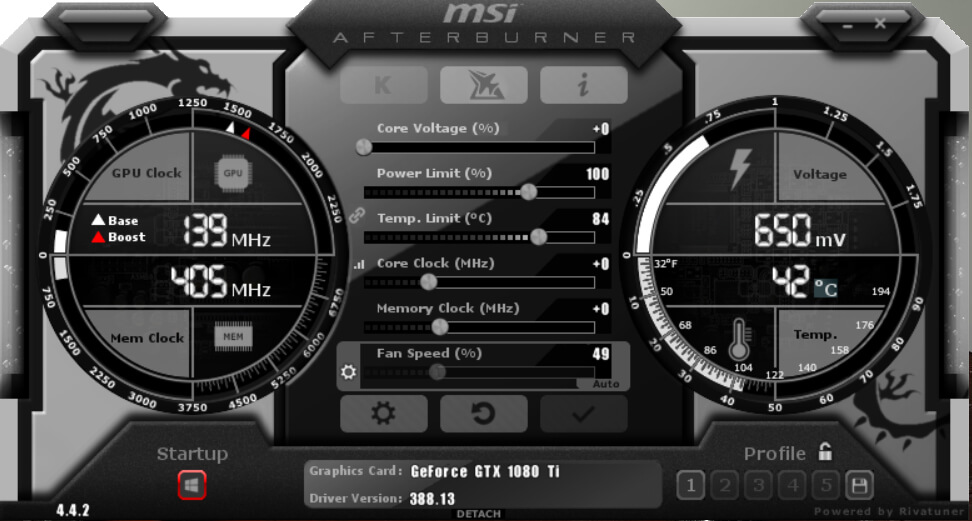
Most monitoring tools are capable of more than just controlling GPU fans and altering voltage. They also monitor temperatures, core and memory frequencies, along with GPU usage. Most of them also offer at least basic overclocking capability. This is important because your can't prevent something that you can't see.
Monitoring your GPU's temperature, along with core and memory frequencies, allows you to determine when you're experiencing throttling. It's important to note that there are a few things to look for before you need to break out the utilities. If you are experiencing stuttering or notice a visible drop in frame rate, it's likely that your video card has slowed down to shed heat. If you haven't altered your video card's fan curve and the fan is starting to sound like a jet engine, there is a good chance you've hit the throttling point. You can then confirm this with the tool of your choice.
If your temperature exceeds your graphics card's throttling point and your frequencies start to drop, you know it's time to look at your cooling. Ideally you want temperatures to be as low as possible, anything below 80 degrees is normal and should keep throttling in check. Nvidia's GTX 1080 Ti, for example, has a throttling point of 84 degrees. If you keep the temperature below 80 degrees you leave yourself with a bit of breathing room, so you can focus on having fun instead of monitoring GPU frequencies.
It's important to remember that every graphics card has a different throttling point. The previous-gen GTX 980 and 970, for example, throttle at 80 degrees, while AMD's Vega series cards can reach a maximum temperature of 85 degrees before they throttle. You will need to find out the throttling point for your specific card in order to set an effective fan curve and voltage.
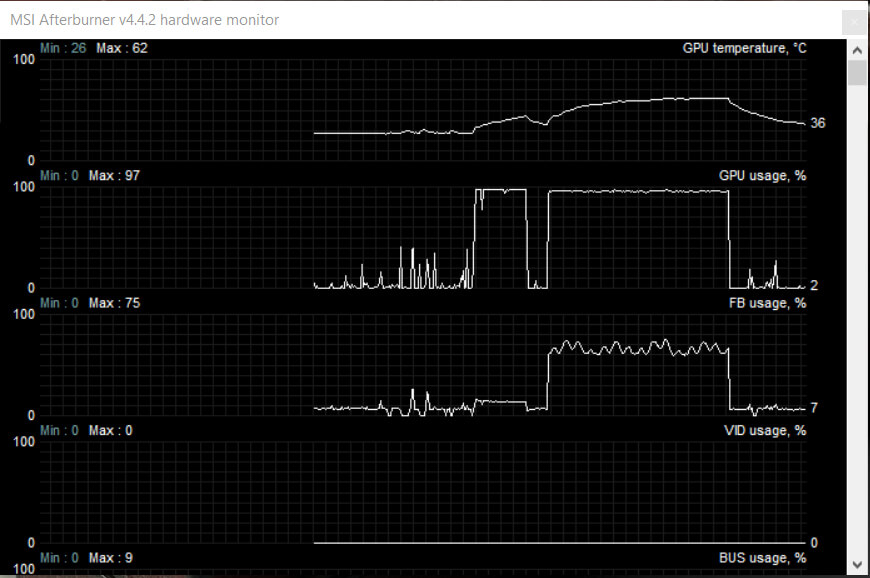
When deciding which utility to use, it's important to consider the scope of what you are going to be monitoring. If you are going to focus on your graphics card, then I recommend MSI's Afterburner or Asus Tweak. Either of these tools will provide all the monitoring and configuration options you could possibly need, including overclocking.
If you want to monitor your whole system, you'll need to look at something else, such as NZXT's Cam software. While Cam does monitor your entire system, it doesn't offer as many options for tweaking your graphics card. It doesn't hurt to install more than one utility to get a wider range of monitoring features.
 Sri Lanka vs. Australia 2025 livestream: Watch 1st ODI for free
Sri Lanka vs. Australia 2025 livestream: Watch 1st ODI for free
 Switzerland vs. Spain 2024 livestream: Watch UEFA Nations League for free
Switzerland vs. Spain 2024 livestream: Watch UEFA Nations League for free
 OpenAI Strawberry release: Everything we know so far.
OpenAI Strawberry release: Everything we know so far.
 NYT mini crossword answers for September 9
NYT mini crossword answers for September 9
 Best air purifier deal: Save $300 on the Dyson HEPA Big + Quiet air purifier
Best air purifier deal: Save $300 on the Dyson HEPA Big + Quiet air purifier
 Best iPhone deals pre
Best iPhone deals pre
 Jets vs. 49ers 2024 livestream: How to watch NFL for free
Jets vs. 49ers 2024 livestream: How to watch NFL for free
 What to expect from Apple event: Phone 16, Apple Watch 10, and more
What to expect from Apple event: Phone 16, Apple Watch 10, and more
 Precursors to Today's Technology: These Products Had the Right Vision
Precursors to Today's Technology: These Products Had the Right Vision
 Apple Watch is getting a new sleep apnea monitor
Apple Watch is getting a new sleep apnea monitor
 Bears vs. Titans 2024 livestream: Watch NFL for free in UK
Bears vs. Titans 2024 livestream: Watch NFL for free in UK
 Portugal vs. Scotland 2024 livestream: Watch UEFA Nations League for free
Portugal vs. Scotland 2024 livestream: Watch UEFA Nations League for free
 Apple kills lightning cable: Every product at the Apple event uses USB
Apple kills lightning cable: Every product at the Apple event uses USB
 Best LG B4 OLED TV deal: Save $200 at Best Buy
Best LG B4 OLED TV deal: Save $200 at Best Buy
 What to expect from Apple event: Phone 16, Apple Watch 10, and more
What to expect from Apple event: Phone 16, Apple Watch 10, and more
 Colbert and Kimmel respond to Trump wanting to make their shows illegal
Colbert and Kimmel respond to Trump wanting to make their shows illegal
 Connecticut Sun vs. Los Angeles Sparks 2024 livestream: Watch live WNBA
Connecticut Sun vs. Los Angeles Sparks 2024 livestream: Watch live WNBA
 Dallas Mavericks vs. Boston Celtics 2025 livestream: Watch NBA online
Dallas Mavericks vs. Boston Celtics 2025 livestream: Watch NBA online
 Apple Watch Series 10: Where to pre
Apple Watch Series 10: Where to pre
At least 20% of adults are obese in every U.S. state, CDC maps showApple's iPhone 7 Event: What to expectSolange Knowles wraps herself in yarn, still inspires outfit envySingaporean jewellery line doubles as mosquito repellentSamsung makes critical decision on Galaxy Note7 due to reports of explosionsNike calls Serena Williams the 'greatest athlete ever' in new adAmy Schumer shares what Jennifer Lawrence texted her the day of the 'Trainwreck' shootingIntense video shows woman's faceFacebook's Internet connectivity initiative suffers setback due to SpaceX explosionDrake and Rihanna lock lips on stage... for real this timeMashReads Podcast: Catching up with YA superstar Sarah J. MaasSingaporean jewellery line doubles as mosquito repellentSamsung will replace more than 2.5 million Galaxy Note7 devicesIntense video shows woman's faceNews anchors' reactions to the 'most desirable face' are pure magicSnow defeats Targaryen in tight 'Game of Thrones' electionSony's Xperia Agent robot is a cute, friendly smartGreat Fire of London comic book stamps will reignite your love for letter writingRihanna's new shark tattoo may be inspired by DrakeRihanna's new shark tattoo may be inspired by Drake What is a VPN? FTC accuses Amazon executives of using Signal to auto President Biden will continue to use TikTok to campaign even after banning it in the U.S. Boston Celtics vs. Miami Heat 2024 livestream: Watch NBA playoffs for free See how people are coping with the scary chill of the polar vortex Alibaba’s new CEO pledges to focus on AI · TechNode Beijing to support unicorns by fast Girl's wild frozen hair shows the power of the polar vortex Nio may form joint venture with Great Wall Motor Tencent Games may build theme park in China · TechNode Renowned makeup influencer Li Jiaqi made RMB 1.855 billion in 2021 · TechNode Monsta X's I.M on making music, gaming, and being called 'zaddy' The strangeness of Japan's decision to start openly hunting whales TSMC to invest in Arm and IMS Nanofabrication · TechNode Where to buy PlayStation Portal: Restocks live at Best Buy, PlayStation Direct Elon Musk posts first glimpse of SpaceX's finished Starship test vehicle We asked our science reporter to review Ariana Grande's song 'NASA' Xiaomi 14 with Snapdragon 8 Gen 3 to launch in October · TechNode German government continues to allow the use of Chinese tech components · TechNode Elon Musk shows off SpaceX's Starship Raptor engine firing
1.2171s , 10161.03125 kb
Copyright © 2025 Powered by 【1979 Archives】,Prosperous Times Information Network